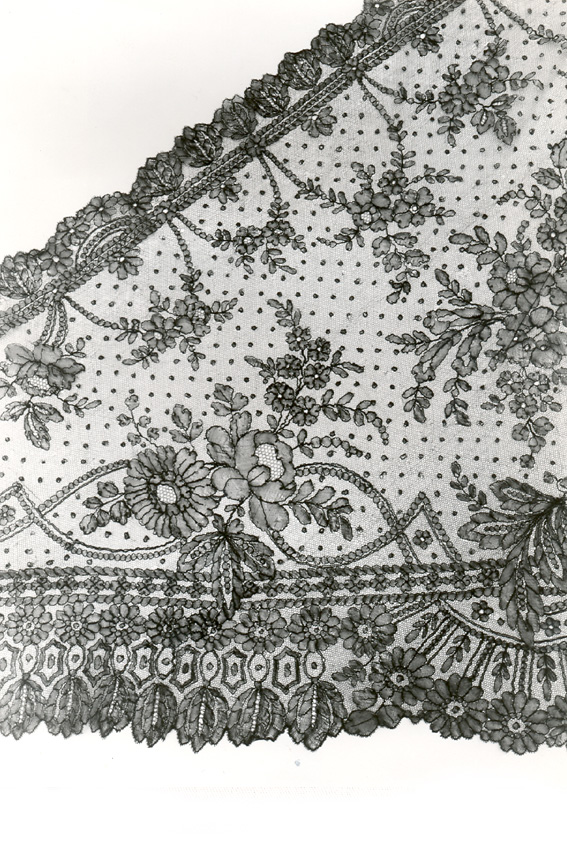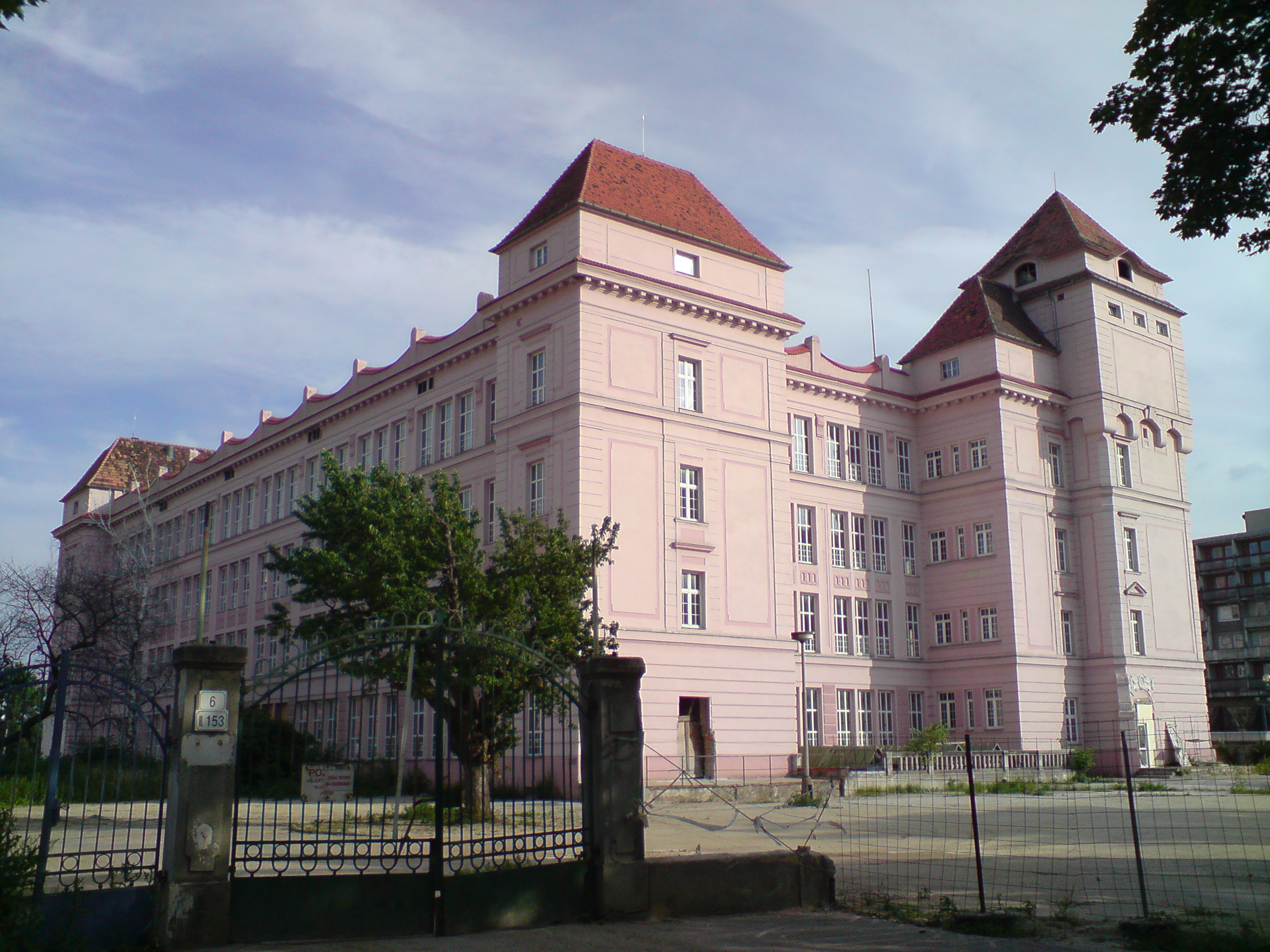|
Caudry
Caudry () is a commune in the Nord department in northern France. Its inhabitants are called theCaudrésiens. The town is mostly known as the Capital City of French Lace (along with Calais). Caudry station has rail connections to Douai, Cambrai, Paris, Lille and Saint-Quentin. Toponymy The city of Caudry has not always carried its current name. However, this last derives from the previous appellations of the city: * Calderiacum since 1087. * Caudris since 1129. * Cauderi since 1219. * Caudri-en-Borneville. * Caudri since 1286. * Caudry since 1349. History In the Middle Ages, as tradition will have it, Maxellende, a daughter of the lord of Caudry, was stabbed to death by one Harduin d'Amerval on 13 November 670 after turning him down. Following this Harduin became blind. However it is said that he recovered his sight as his victim's body was carried past him during its translation. Since then Maxellende has been the patron saint of Caudry and of the blind or partially sighte ... [...More Info...] [...Related Items...] OR: [Wikipedia] [Google] [Baidu] |
Caudry Station
Caudry is a railway station located in the commune of Caudry in the Nord department, France. The station is served by TER Hauts-de-France trains ( Lille-Flandres - Saint-Quentin line). TER Hauts-de-France, accessed 14 April 2022. Caudry was formerly connected by secondary lines with Saint-Quentin via , Cambrai, via |
Communauté D'agglomération Du Caudrésis Et Du Catésis
Communauté d'agglomération du Caudrésis et du Catésis is the ''communauté d'agglomération'', an intercommunal structure, centred on the towns of Caudry and Le Cateau-Cambrésis. It is located in the Nord department, in the Hauts-de-France region, northern France. Created in 2011, its seat is in Beauvois-en-Cambrésis.CA du Caudrésis et du Catésis (N° SIREN : 200030633) BANATIC, accessed 8 October 2022. Its area is 372.7 km2. Its population was 64,124 in 2019, of which 14,121 in Caudry.Comparateur de territoire [...More Info...] [...Related Items...] OR: [Wikipedia] [Google] [Baidu] |
Battle Of Le Cateau
The Battle of Le Cateau was fought on the Western Front during the First World War on 26 August 1914. The British Expeditionary Force (BEF) and the French Fifth Army had retreated after their defeats at the Battle of Charleroi (21–23 August) and the Battle of Mons (23 August). The British II Corps fought a delaying action at Le Cateau to slow the German pursuit. Most of the BEF was able to continue its retreat to Saint-Quentin. Prelude Having retreated from Mons two days earlier, Le Cateau and Mons being apart, the British II Corps (General Sir Horace Smith-Dorrien) was exhausted. The corps had become separated from the rest of the BEF because of the unexpected retreat by Sir Douglas Haig, the commander of I Corps, who had fought his own rearguard action at Landrecies on 25 August. Following that engagement, where Haig had rallied his troops, revolver in hand, he succumbed to panic, writing to the French High Command about the imminent debacle. He had greatly ove ... [...More Info...] [...Related Items...] OR: [Wikipedia] [Google] [Baidu] |
Romeries
Romeries () is a commune in the Nord department in northern France. Heraldry See also *Communes of the Nord department The following is a list of the 648 communes of the Nord department of the French Republic. The communes cooperate in the following intercommunalities (as of 2020):Communes of Nord (French department) {{Nord-geo-stub ... [...More Info...] [...Related Items...] OR: [Wikipedia] [Google] [Baidu] |
Master Craftsman
Historically, a master craftsman or master tradesman (sometimes called only master or grandmaster) was a member of a guild. The title survives as the highest professional qualification in craft industries. In the European guild system, only masters and journeymen were allowed to be members of the guild. An aspiring master would have to pass through the career chain from apprentice to journeyman before he could be elected to become a master craftsman. He would then have to produce a sum of money and a masterpiece before he could actually join the guild. If the masterpiece was not accepted by the masters, he was not allowed to join the guild, possibly remaining a journeyman for the rest of his life. History Craftsman or Artisan was who made things or provided services. Mastercraftsman was the superior, and expert craftsman called ''ustad'' and apprentice was called ''shagird'' in Medieval India. The grand vizier of the Mughal emperor Akbar discussed their social status and ... [...More Info...] [...Related Items...] OR: [Wikipedia] [Google] [Baidu] |
Weaving
Weaving is a method of textile production in which two distinct sets of yarns or threads are interlaced at right angles to form a fabric or cloth. Other methods are knitting, crocheting, felting, and braiding or plaiting. The longitudinal threads are called the warp and the lateral threads are the weft, woof, or filling. (''Weft'' is an Old English word meaning "that which is woven"; compare ''leave'' and ''left''.) The method in which these threads are interwoven affects the characteristics of the cloth. Cloth is usually woven on a loom, a device that holds the warp threads in place while filling threads are woven through them. A fabric band that meets this definition of cloth (warp threads with a weft thread winding between) can also be made using other methods, including tablet weaving, back strap loom, or other techniques that can be done without looms. The way the warp and filling threads interlace with each other is called the weave. The majority of woven products a ... [...More Info...] [...Related Items...] OR: [Wikipedia] [Google] [Baidu] |
Fabrics
Textile is an umbrella term that includes various fiber-based materials, including fibers, yarns, filaments, threads, different fabric types, etc. At first, the word "textiles" only referred to woven fabrics. However, weaving is not the only manufacturing method, and many other methods were later developed to form textile structures based on their intended use. Knitting and non-woven are other popular types of fabric manufacturing. In the contemporary world, textiles satisfy the material needs for versatile applications, from simple daily clothing to bulletproof jackets, spacesuits, and doctor's gowns. Textiles are divided into two groups: Domestic purposes onsumer textilesand technical textiles. In consumer textiles, aesthetics and comfort are the most important factors, but in technical textiles, functional properties are the priority. Geotextiles, industrial textiles, medical textiles, and many other areas are examples of technical textiles, whereas clothing and ... [...More Info...] [...Related Items...] OR: [Wikipedia] [Google] [Baidu] |
Chantilly Lace
Chantilly lace is a handmade bobbin lace named after the city of Chantilly,"Chantilly" ''The Oxford English Dictionary''. 2nd ed. 1989. France, in a tradition dating from the 17th century. The famous silk laces were introduced in the 18th century. ''Chantilly lace'', was also produced in the 19th century but this one was actually made not in Chantilly area but in the French Norman town Bayeux and in Geraardsbergen, now in Belgium. Chantilly lace is known for its fine ground, outlined pattern, and abundant detail. The pattern is outlined in ''cordonnet'', a flat untwisted strand. The best Chantilly laces were made of silk, and were generally black, which made them suitable for mourning wear. White Chantilly lace was also made, both in linen and silk, though most Chantilly laces were made of silk. The black silk Chantilly lace became especially popular, and there was a large market for it in Spain and the Americas. Chantilly and the Spanish laces (such as blonde lace) were the ... [...More Info...] [...Related Items...] OR: [Wikipedia] [Google] [Baidu] |
Communes Of France
The () is a level of administrative division in the French Republic. French are analogous to civil townships and incorporated municipalities in the United States and Canada, ' in Germany, ' in Italy, or ' in Spain. The United Kingdom's equivalent are civil parishes, although some areas, particularly urban areas, are unparished. are based on historical geographic communities or villages and are vested with significant powers to manage the populations and land of the geographic area covered. The are the fourth-level administrative divisions of France. vary widely in size and area, from large sprawling cities with millions of inhabitants like Paris, to small hamlets with only a handful of inhabitants. typically are based on pre-existing villages and facilitate local governance. All have names, but not all named geographic areas or groups of people residing together are ( or ), the difference residing in the lack of administrative powers. Except for the municipal arrondi ... [...More Info...] [...Related Items...] OR: [Wikipedia] [Google] [Baidu] |
Silk
Silk is a natural protein fiber, some forms of which can be woven into textiles. The protein fiber of silk is composed mainly of fibroin and is produced by certain insect larvae to form cocoons. The best-known silk is obtained from the cocoons of the larvae of the mulberry silkworm ''Bombyx mori'' reared in captivity (sericulture). The shimmering appearance of silk is due to the triangular prism-like structure of the silk fibre, which allows silk cloth to refract incoming light at different angles, thus producing different colors. Silk is produced by several insects; but, generally, only the silk of moth caterpillars has been used for textile manufacturing. There has been some research into other types of silk, which differ at the molecular level. Silk is mainly produced by the larvae of insects undergoing complete metamorphosis, but some insects, such as webspinners and raspy crickets, produce silk throughout their lives. Silk production also occurs in hymenoptera ( bee ... [...More Info...] [...Related Items...] OR: [Wikipedia] [Google] [Baidu] |
French Fashion
French (french: français(e), link=no) may refer to: * Something of, from, or related to France ** French language, which originated in France, and its various dialects and accents ** French people, a nation and ethnic group identified with France ** French cuisine, cooking traditions and practices Fortnite French places Arts and media * The French (band), a British rock band * "French" (episode), a live-action episode of ''The Super Mario Bros. Super Show!'' * ''Française'' (film), 2008 * French Stewart (born 1964), American actor Other uses * French (surname), a surname (including a list of people with the name) * French (tunic), a particular type of military jacket or tunic used in the Russian Empire and Soviet Union * French's, an American brand of mustard condiment * French catheter scale, a unit of measurement of diameter * French Defence, a chess opening * French kiss, a type of kiss involving the tongue See also * France (other) * Franch, a surname * French ... [...More Info...] [...Related Items...] OR: [Wikipedia] [Google] [Baidu] |
Textile Industry
The textile industry is primarily concerned with the design, production and distribution of yarn, cloth and clothing. The raw material may be natural, or synthetic using products of the chemical industry. Industry process Cotton manufacturing Cotton is the world's most important natural fibre. In the year 2007, the global yield was 25 million tons from 35 million hectares cultivated in more than 50 countries. There are five stages of cotton manufacturing: * Cultivating and Harvesting * Preparatory Processes * Spinning — giving yarn * Weaving — giving fabrics * Finishing — giving textiles Synthetic fibres Artificial fibres can be made by extruding a polymer, through a spinneret (polymers) into a medium where it hardens. Wet spinning (rayon) uses a coagulating medium. In dry spinning (acetate and triacetate), the polymer is contained in a solvent that evaporates in the heated exit chamber. In melt spinning (nylons and polyesters) the extruded polymer is cooled in gas or ... [...More Info...] [...Related Items...] OR: [Wikipedia] [Google] [Baidu] |






